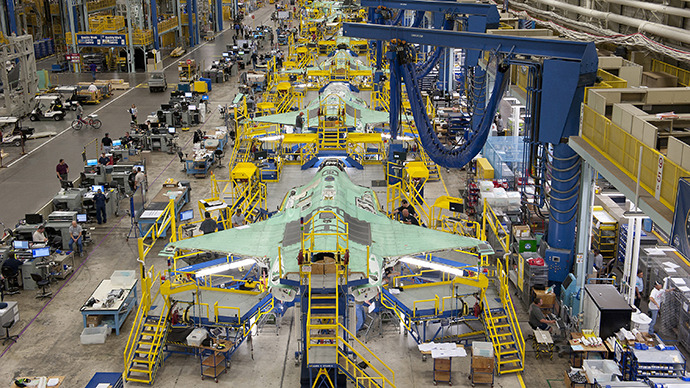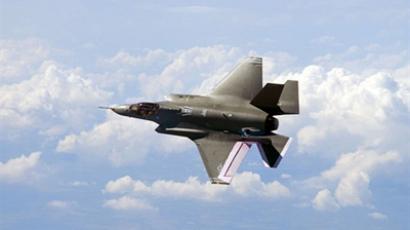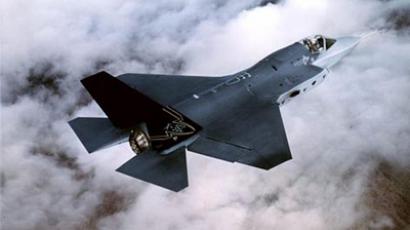F-35 program chief lashes out at jet producers

The head of the US Joint Strike Fighter program has publicly lashed out at two defense companies for “trying to squeeze every nickel out of” the Pentagon for an F-35 warplane that is the most expensive combat aircraft in history.
US Lieutenant-General Christopher Bogdan on Wednesday criticized Lockheed Martin and Pratt & Whitney for overcharging the US government and failing to establish a good relationship with the Pentagon, Reuters reports.
“I want them both to start behaving like they want to be around for 40 years,” Bogdan told reporters during a visit to Australia. “I want them to take on some of the risk of this program, I want them to invest in cost reductions, I want them to do the things that will build a better relationship. I’m not getting all that love yet.”
The Pentagon has planned to procure a fleet of 2,443 F-35 fighter jets over the next 40 years to replace some of its older aircrafts. But the estimated cost to develop and buy this fleet is around $382 billion, while operating it will bring the cost to $1 trillion during the next four decades.
“Its an unaffordable program at the numbers that we’re using,” Lieutenant General Terry Robling told Reuters earlier this month. Bogdan, who heads the program for the F-35 warplanes, has long sought convince Australian lawmakers to buy 100 of the jets, since Australia is a close American ally.
But convincing American allies to purchase the expensive warplanes is proving difficult, since an F-35 was grounded for the second time in two months last week after an inspector discovered a crack on a turbine blade. The military does not know when the plane will be ready to fly again. Additionally, the manufacturers initially claimed the planes would cost $67 million each – but now claim that the cost is $90 million each.
Angered by the manufacturers’ false claims, Bogdan publicly condemned their actions and asked them to work towards developing a better relationship with the US government.
“What I see Lockheed Martin and Pratt & Whitney doing today is behaving as if they are getting ready to sell me the very last F-35 and the very last engine and are trying to squeeze every nickel out of that last F-35 and that last engine,” Bogdan said, who was speaking to reporters at the Australian International Airshow.
Lockheed Martin is the primary defense contractor for the F-35 program, while Pratt & Whitney is the sole supplier of F-35 engines, making it impossible for the government to turn elsewhere for the parts.
Knowing that the US does not have alternative suppliers may have prompted the companies to charge such high prices for their equipment. When Bogdan took over as head of the F-35 program last September, he called the relationship between Lockheed Martin and the US military “the worst I’ve ever seen.”
On Wednesday, Bogdan told reporters that the relationship has improved “a little bit”, but not nearly at the rate he wants to see the relationship develop.
And without Australia’s help in purchasing some of the F-35s that the US military needs, the Pentagon will struggle to buy thousands of the 2,443 F-35s alone.
As the US military budget is slated to be cut by nearly $500 billion in the next ten years, the F-35 program will be costlier than ever.
Other countries currently paying for the development of the F-35 are Birtain, Candada, Italy, Turkey, Denmark, the Netherlands and Norway. If Australia opts out, the cost for the US and its allies will only rise at a time when the Pentagon could be facing massive budget cuts that would force the military to reconsider where it spends its money.














